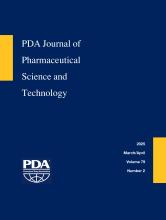Abstract
As markets for recombinant biologicals constantly grow, risks related to the biohazardous materials used are not yet always understood and assessed systematically. Thus, there is a strong need to systematically assess technical solutions in GMP area and best practices for all steps in biotechnological production using biohazardous materials up to biological safety level 2. Especially Viral vectors, Virus based vaccines are more coming to market as novel therapies, asking for different safety requirements.
As Single Use Solutions (SUS) are widely used in clinical- and production scale in Upstream and Downstream processing until Final fill operations, new practices must be developed with a different approach enabling production under BSL2.
Production of biologics which are produced in BSL2 area regime using SU solutions must be reviewed under different aspects in terms of safety for the product + staff equally and probable contamination of the environment. SU Solutions for this new purpose must be differently handled with care from goods entry until final discard of products post usage. The production starting at fabricator of the SUS items itself might require modifications. The design of SUS items for the BSL2 purpose must be tested already in a different way in production, to fulfill the higher safety level regimes to protect the product and operators. In this paper we give examples for considerations how to unpack, store such SUS consumables and which conditions in the facility are favorable in combination with proper staff training Examples of suitable components and existing SUS equipment's for the Upstream- and Downstream processing of such products, to give operators, Suite- and plant managers, A+E with planers and people in regulatory departments the needed information, to enable the safe and regulatory aligned production of such biologic therapies.
- BSL2
- Single Use System
- Single Use Operation
- Biohazard waste
- manufacturing engineering control
- best practice of SU solution usage
- Received January 24, 2025.
- Revision received April 13, 2025.
- Accepted May 4, 2025.
- Copyright © 2025, Parenteral Drug Association
PDA members receive access to all articles published in the current year and previous volume year. Institutional subscribers received access to all content. Log in below to receive access to this article if you are either of these.
If you are neither or you are a PDA member trying to access an article outside of your membership license, then you must purchase access to this article (below). If you do not have a username or password for JPST, you will be required to create an account prior to purchasing.
Full issue PDFs are for PDA members only.
Note to pda.org users
The PDA and PDA bookstore websites (www.pda.org and www.pda.org/bookstore) are separate websites from the PDA JPST website. When you first join PDA, your initial UserID and Password are sent to HighWirePress to create your PDA JPST account. Subsequent UserrID and Password changes required at the PDA websites will not pass on to PDA JPST and vice versa. If you forget your PDA JPST UserID and/or Password, you can request help to retrieve UserID and reset Password below.






